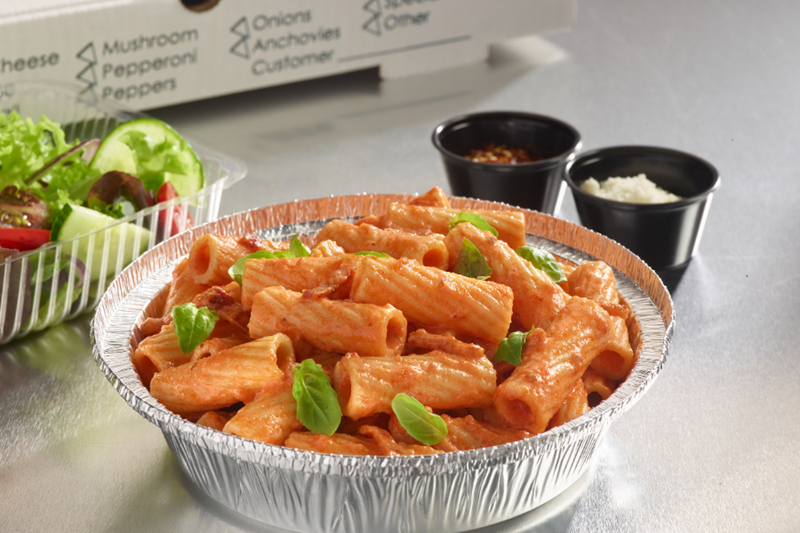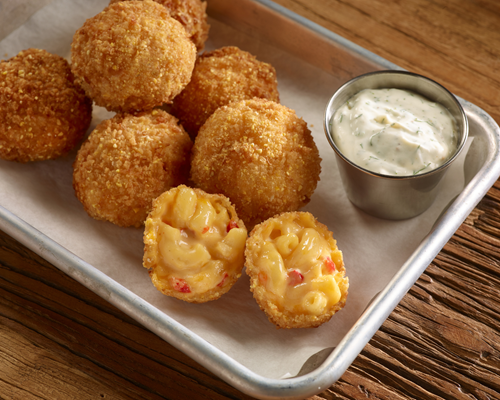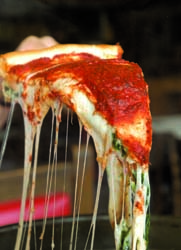 Who doesn’t need a good night of rest? Hass Aslami, founder of Pizza 9 in Albuquerque, New Mexico, sleeps peacefully. You won’t find him waking in a cold sweat worrying that one of the drivers at the company’s four franchise stores has been in a crash that caused injuries that could financially ruin one of the stores.
Who doesn’t need a good night of rest? Hass Aslami, founder of Pizza 9 in Albuquerque, New Mexico, sleeps peacefully. You won’t find him waking in a cold sweat worrying that one of the drivers at the company’s four franchise stores has been in a crash that caused injuries that could financially ruin one of the stores.
As part of the company’s franchise agreement, operators are required to get non-owner automobile liability insurance. “It’s not cheap, but it’s well worth it,” Aslami says.
When drivers use their own vehicles for deliveries, pizzeria owners and insurance experts agree that having non-owner automobile insurance is crucial to operations — and to the business’ survival. Experts estimate it costs anywhere from $500 to $10,000 a year, usually depending on the amount of business the pizzeria generates from deliveries.
“If you don’t do delivery then you may not know about non-owner automobile insurance,” says Georgianna Stump, senior director for Risk Services Corp., a company based in Louisville, Kentucky, that provides insurance to the restaurant industry. “You may not know that there’s huge exposure to a business when a driver delivers a product. There have been multi-million dollar claims” against pizzerias.
One does not have to look back too far in history to recall some major claims. Domino’s dropped its “30-minute Guarantee” in the 1980s after people filed lawsuits charging that they had been struck by drivers allegedly speeding to make their deliveries. In 1992, the company paid $2.8 million to the family of a woman who was killed by a Domino’s driver. A year later, a jury awarded nearly $80 million in damages to a woman left a quadriplegic after being hit by a Domino’s driver who had run a red light. The suit was settled by Domino’s for an amount in the seven figures.
“Domino’s suffered huge losses because it was said that they were encouraging their drivers to drive fast and not be safe,” Stump says.
Pizzeria owners who believe their employees’ insurance will cover them if a driver is involved in a major accident would be well-advised to read the fine print on the driver’s policy, but few do. It is not uncommon, for instance, for insurance companies to put an exclusion in a policy stating that it will not cover a driver involved in an accident while delivering food or a pizza product.
Gabe Connell, owner of Hot Box Pizza in Indianapolis, says he has seen these exclusions in drivers’ policies.
“We’ve had drivers not approved for hiring because their insurance policy had an exclusion,” says Connell, whose company uses both company-owned and driver-owned cars for deliveries.
Even if a driver does not have such an exclusion in his policy, he may not carry enough in liability to cover a costly accident. Laws vary, but in Kentucky, where Risk Services is located, the minimum amount of coverage required for drivers is $25,000 not enough to cover a large accident.
“Fender benders will probably fall within (the driver’s) liability limit, but major accidents will not,” says Cheryl Downey, senior vice president of Willis HRH Insurance Service which provides insurance to the restaurant industry. “Non-owner claims are rare, but when they happen they can be very big.”
Downey and Stump agree that pizzeria operators carrying non-owned insurance should have at least $1 million in liability coverage.
“The most important thing is to buy a high limit,” Downey said. “If you don’t carry enough of a limit they can go after you personally.” David Orberson, director of claims for Papa John’s, says his company requires franchisees to purchase $1 million in liability from an A-rated company.
“The vast majority of losses are going to fall below that limit,” he says. “But it is there to make sure that one loss won’t put a franchise out of business. I can’t imagine any business that has a delivery component not making sure they have robust limits. The driver is going to have the primary insurance, but if there’s a serious accident the pizzeria may be responsible.”
Before purchasing a policy, Downey says it is important to know what warranties it includes because those could void the contract. She advises: “Be sure to ask the agent, ‘Is there a warranty and can you explain it to me?’ ”
A warranty might require a business owner to run checks on drivers through the state’s motor vehicle department or put a limit on the number of moving violations a driver can have.
“It might state that you can’t hire a driver with more than three moving violations in the last three years,” says Downey. “But one night, a manager could hire a friend to fi ll in for one night and not know that the driver has four violations. If there’s an accident, the business owner would not be covered.”
She recommends avoiding policies with warrantees and also said pizzeria owners should not have to pay a deductible on non-owner auto insurance.
Both Downey and Stump also advise doing regular inspections of drivers’ vehicles and instilling a safety culture in the workplace.
“Constantly preach, ‘Be safe. Drive slow, especially in inclement weather,” Stump says.
Connell maintains non-owner auto liability insurance for driver-owned cars. He also talks to drivers about being safe rather than rushing to deliver a pizza.
“I’d rather give a customer a free pizza and an apology than risk having a driver getting injured or injuring someone else,” he says.
Limited Liability
Saving money and being more environmentally friendly were two reasons Glass Nickel Pizza Co. in Madison, Wisconsin, purchased six company owned cars five years ago that, along with 23 vehicles owned by drivers, are used to make deliveries.
“We decided to make our own fuel from veggie oil,” says Brian Glassel, co-owner of Glass Nickel. “That helped us along in making the decision to buy our own cars.”
Glassel pays to insure his company cars, and pays for non-owner automobile liability insurance for his drivers’ cars. He says the savings from making their own fuel covers the costs related to the company-owned cars.
“They pay for themselves,” he says. Nonetheless, Cheryl Downey, senior vice president of Willis HRH Insurance Service, says the trend is to rely on driver owned cars for delivery. Although she did not have any statistics, she says her company sees more restaurants using driver-owned cars for deliveries than 15 or 20 years ago.
“The majority of our clients use employee-owned vehicles, it’s more cost effective,” she says.
There are other advantages to driver owned vehicles, according to Downey. “Generally, drivers take better care of their own vehicles,” she says. “They don’t take that same care with a company owned car.”
Glassel might dispute that, however. He says his company cars are more reliable that driver-owned cars.
“They’re always going to be running,” he says. “They’re always taken care of. Some drivers let things go until they have to be fixed.”
His company-owned fleet, which includes a 1981 Volkswagon Diesel Rabbit and 2005 Jetta Diesels, is used to market Glass Nickel and send a message that the company cares about the environment.
Annemarie Mannion is a frequent contributor to Pizza Today.



